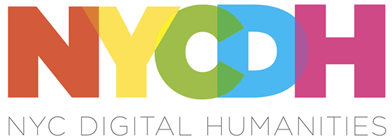The DiRT Directory is a registry of digital research tools for scholarly use.
Explore
On this site
The following tools are in use by members on NYC Digital Humanities.
BuddyPress is a variant of WordPress that includes social networking features.Learn more on DiRTDirectory.org
DH Press (originally called diPH) is a toolkit conceived as an easy-to-use WordPress plugin which allows potentially every kind of user to visualise and mashup historic and geographic information, documents and various types of multimedia content to develop digital humanities project.
The user cannot start from the toolkit itself, as the first step to set up a project, when the toolkit is already installed, is a CSV import. This means that the raw information has to be processed first, through any software like Microsoft Excel or Google Spreadsheet, following some conventions dictated by the toolkit, and once completed must be exported in CSV format. The file can then be imported into DH Press.
At this point, the user finally has full control over the data. First, the toolkit needs to be informed of what kind of data is in each column, as it can handle various types, such as Short Text, Long Text, Lat/Lon, Date, and Link. The steepest learning curve resides here, in the data management part, as the database must be set up very carefully, and fixing any problem later is complex. This does not mean that new users cannot approach the tool, but some basic research on data management is required to make correct use of it.
After setting up all this fields, called “motes” in the toolkit, a legend can be assigned to each of them, for example a field called “city” might contain, through multiple entries, ten different cities, and to each of those will correspond the colour chosen by the user. It is also possible to assign icons or png images instead of colours.
A single control panel then allows the user to create, set up and manage multiple visualisations of different kind, and in each of them the user can choose which information to display and how. This part is the most useful and is really straightforward.
The last section of the control panel lets the user set up custom fields for data and run a test of the whole project, and outputs detailed error information.
Following the training page, http://dhpress.org/training/, it is possible to take advantage of a pre-existing database, which can be used to quickly set up a project, so that one can instantly work on the main control panel. There is a detailed google document that guides the user through the process step by step, and also offers an even more detailed annex. A couple of hours is enough to go through all of it and get the necessary information to use it correctly. Then, any view can be quickly set up and customised in any desired way.
Overall, this toolkit is quite stable, reliable, user-friendly after the first entry barrier and gives you a varied set of tools to visualise and display a large amount of data in a neat, organised manner.
For a more detailed and personal review, please read http://claudiasartori.com/2015/01/tool-review-dh-press/Learn more on DiRTDirectory.org
Used by Frank Cernik — Show all usersImageJ is a Java open source image processing program designed for scientific multidimensional images. It is highly extensible, with thousands of plugins and macros for performing a wide variety of tasks, and a strong, established user base.
There are three major versions of ImageJ:ImageJ1 - The stable version, developed by Wayne Rasband at NIH since 1997
ImageJ2 - Focuses on analysis of scientific multidimensional image data. Includes ImageJ1 with a compatibility layer
Fiji - A distribution of ImageJ for the life sciences. It provides a large number of additional plugins to facilitate analysis of life sciences images, particularly microscopy images. Built on the ImageJ2 platform.Learn more on DiRTDirectory.orgUsed by — Show all usersLynks provides an easy to use, in-browser tool that helps you to create your own networks. Lynks is an initiative by Centre for Innovation, part of Leiden University (Campus The Hague). The software has been developed in 2014 in co-creation, with expertise from Dr. Eelke Heemskerk from University of Amsterdam. The software development has been supported by the financial contributions from the European Union Fund for Regional Development (EFRO) and the Municipality of The Hague.Learn more on DiRTDirectory.org
Used by Frank Cernik — Show all usersWordPress is an easy-to-use web publishing platform originally designed around blogging that has now evolved with functionality as a robust content or learning management system, with many themes and plugins for extra functionality.Learn more on DiRTDirectory.org



